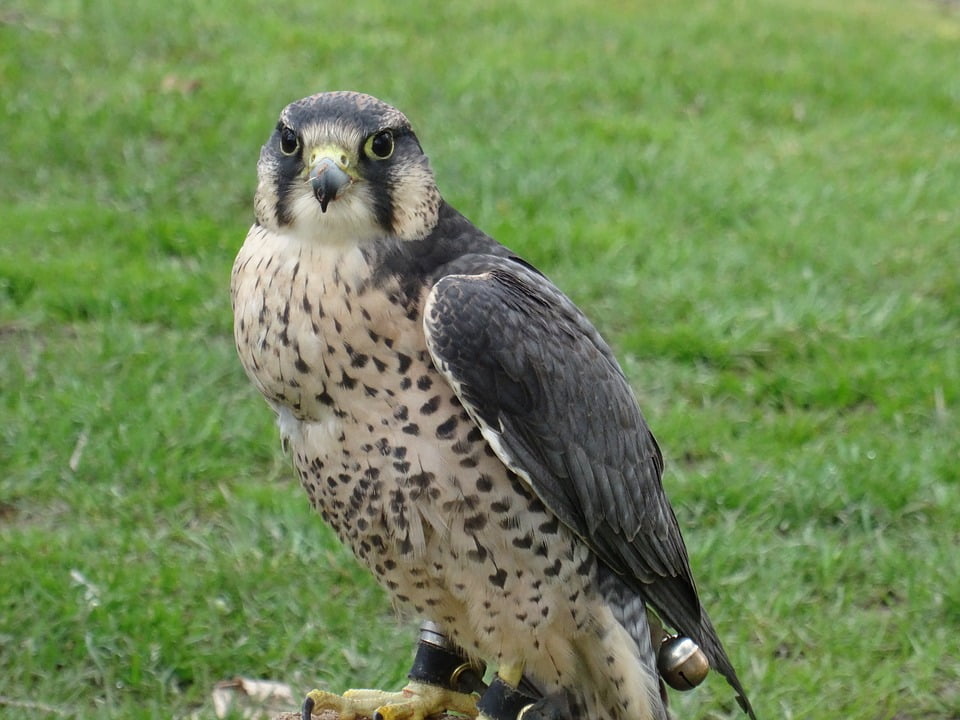

In western Washington, Peregrine Falcons nest along the coast, in the San Juan Islands, in Puget Sound, and even in downtown Seattle and Tacoma. The range of the Peregrine Falcon appears to be changing rapidly as new breeding locations are found every year.

It was extirpated from the state but has been reintroduced in a number of locations and seems to be recovering. The Continental Peregrine Falcon, or Anatum Peregrine, inhabits eastern Washington. Peale's Peregrine Falcon is found along the coast and in Puget Sound.

As a result of this recovery, the federal government has down-listed them from Endangered to Sensitive. The population is still small and is highly vulnerable to disturbance and environmental contaminants, but productivity levels are high and the population continues to increase. Peregrine Falcons can now be found in most parts of the state where there are cliffs or structures for nesting and sufficient prey. In 2000, 56 pairs were counted, doubling the number counted just seven years prior. In Washington, Peregrine Falcons reached a low of four pairs in 1980. They are considered a species of special concern by the US Fish and Wildlife Department, and are listed as an at-risk species by the Washington Gap Analysis. With the ban of DDT in the United States, the falcons have begun to recover, but have required reintroduction in many areas to regain a foothold where they had disappeared. Peregrine Falcons were severely endangered (and actually extirpated from eastern North America) in the mid-20th Century, mostly due to the pesticide DDT, which softens eggshells and results in widespread nest failure. In Washington, one species from this family belongs to the caracara group, while the others are true falcons. Extended parental care is the norm for this family, as it takes a relatively long time for the young to learn to hunt.

Once the young no longer need to be brooded, both parents bring food. The female generally incubates the eggs and broods the young, while the male brings food to the nest. Some caracaras build stick nests in trees, but most species in this family nest on cliffs, in other birds' nests, or in cavities, and typically do not add any nesting material. They are generally monogamous and form long-term pair bonds. Like other birds of prey, females are larger than males. Regardless of the approach, members of this family almost always use their feet to catch prey. Members of the caracara group are more opportunistic, taking carrion as well as live prey and often foraging on the ground. Many catch avian prey in flight, but others prey on large insects, mammals, and ground-dwelling birds. Built for speed, most falcons have pointed wings and long tails. Some of the fastest-flying birds can be found in the falcon group. Though the Peregrine Falcon is an elite predator, it does have its own predators, including Gyrfalcons, eagles, Great Horned owls, and other Peregrines.This widespread and diverse family of predatory birds is divided into two groups. Peregrine Falcons do have other hunting methods, including level pursuit, picking birds out of large flocks, and occasionally even hunting on the ground. They then catch the bird and bite through the neck to kill it. Stoops begin 300–3,000 feet above their prey and end either by grabbing the prey or by striking it with the feet hard enough to stun or kill it. When hunting, Peregrines start by watching from a high perch or by flapping slowly or soaring at great height. One researcher studied trained Peregrine Falcons while skydiving and described their body position while diving at 150 mph and 200 mph. When stooping, or dropping on prey with their wings closed, it's been calculated that Peregrine Falcons can achieve speeds of 238 mph. Their average cruising flight speed is 24 to 33 mph, increasing to 67 mph when in pursuit of prey. Peregrine Falcons are very strong fliers and often reported to be the fastest bird in the world.


 0 kommentar(er)
0 kommentar(er)
